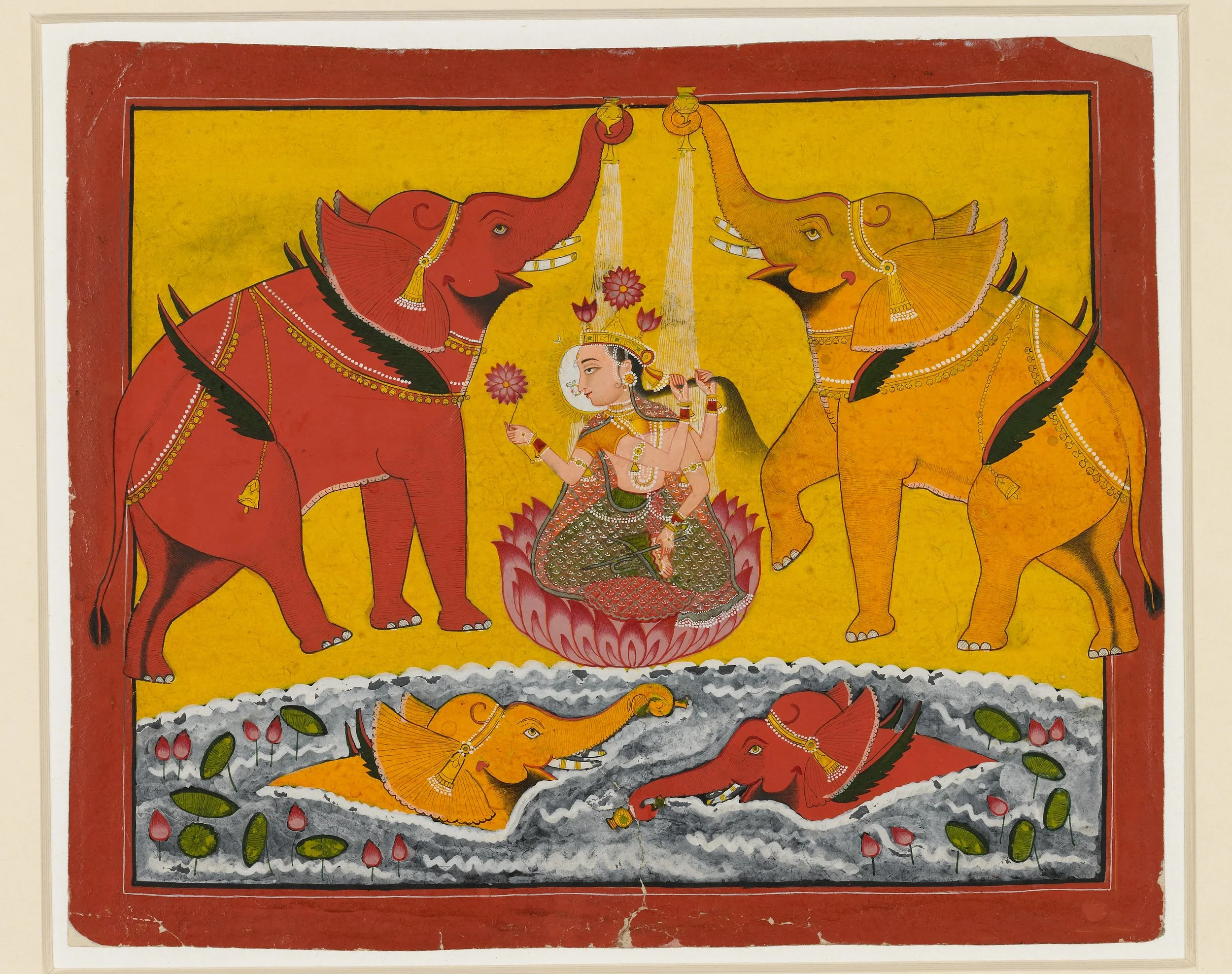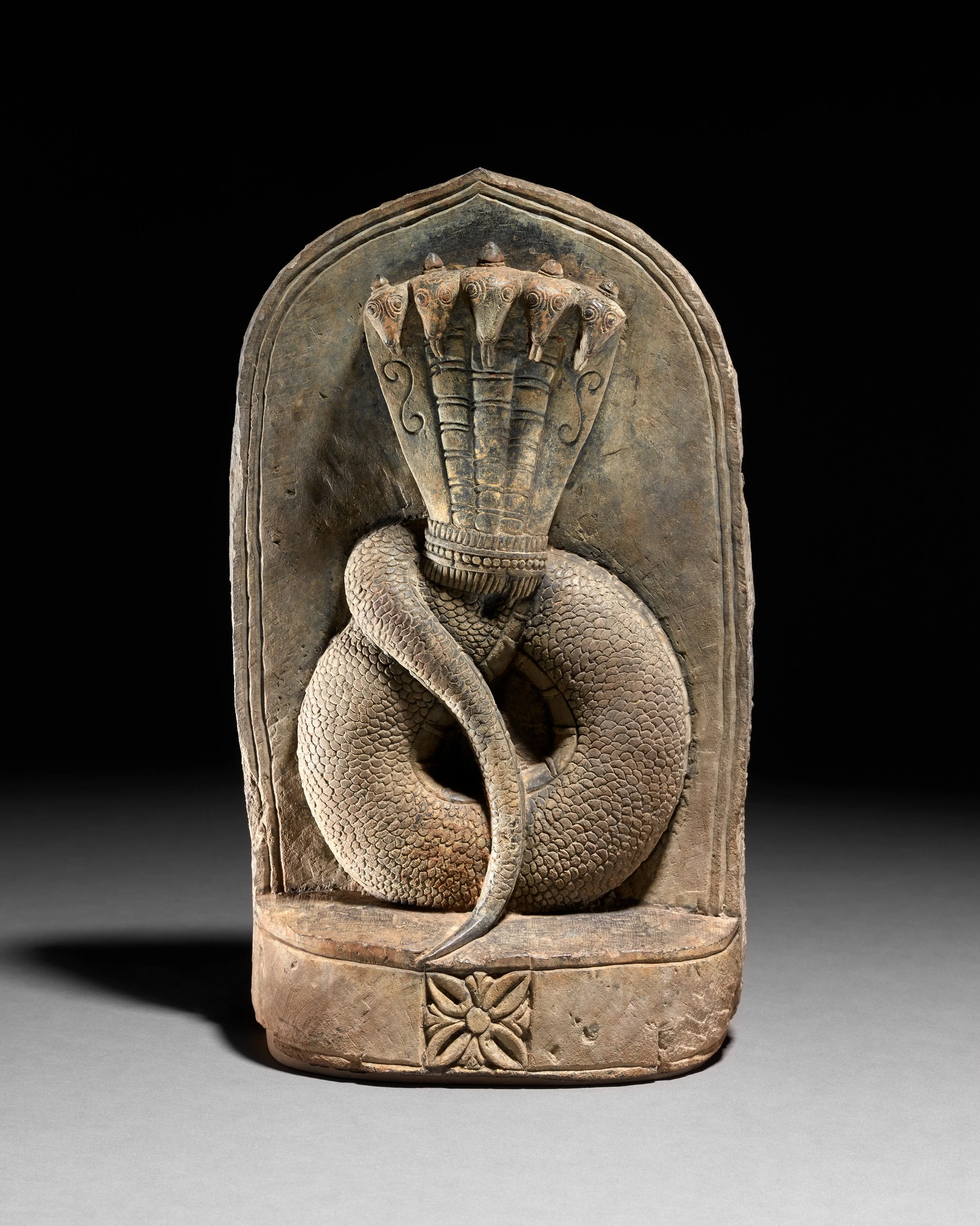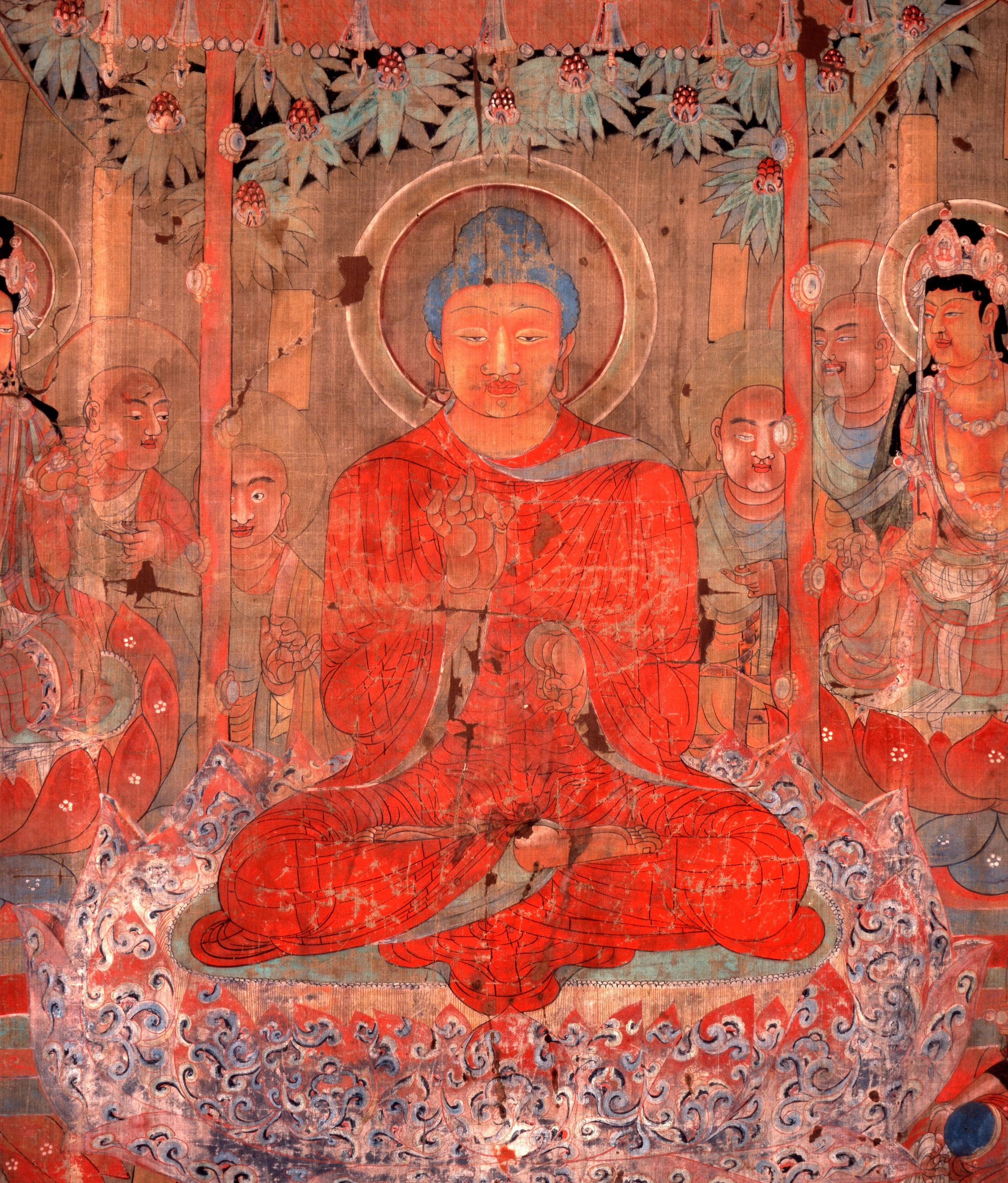From Nature Spirits To Gods: Tracing The Sacred Art Of Ancient India
(REVIEW) The devotional art of Jainism, Buddhism and Hinduism share many similarities, even some gods. To understand why, you need to examine the ancient Indian origins of these religions and their iconographies, which can be traced back to the powerful nature spirits and divine serpents once worshipped across the subcontinent.
The ambitious and visually rich exhibition, “Ancient India: Living Traditions” at London’s British Museum, reveals how these three faiths and their sacred images evolved between 200 BCE and 600 ACE, as ancient deities once represented abstractly became anthropomorphised and then adopted by Jains, Buddhists and Hindus.
The first room transports us back to the second century BCE, when India was covered in forests and agricultural land. In rural communities, most people believed in mysterious nature spirits known as yakshas (male) and yakshis (female). Their appeal was widespread and thousands of small terracotta figures and stone carvings depicting them have been discovered across South Asia.
Listen: ‘Exhibiting Faith’ podcast
It is thought that these are devotional objects, worshipped in household shrines, or left as offerings at religious sites predating India’s major religions. As the exhibition demonstrates so lucidly, yaksha and yakshi imagery inspired later depictions of the gods and enlightened teachers of Jainism, Buddhism and Hinduism.
Many yakshas were depicted with mischievous or grimacing expressions, squat bodies and rounded bellies. If placated by offerings, it was believed they would bestow blessings and good fortune. Yakshis were agents of abundance and fertility but also of death and disease. Depicted as full-figured, extravagantly bejeweled women, some have weapons in their hair, while others hold flowers in their hands.
Some nature spirits were given human bodies and animal heads. For instance, sculptures of the popular elephant-headed god Ganesha, who is venerated by adherents of all three religions, show clear yaksha origins.
Serpent deities known as nagas and naginis were also important, worshipped as guardians of life-giving waters and able to grant prosperity and protection. They were also incorporated into later devotional art, often depicted as protectors, forming canopies over the heads of figures such as Balarama (the brother of Krishna), Parshvanatha (an enlightened Jain teacher), and the Buddha.
Photos courtesy of the British Museum
Drawing from the British Museum’s extensive South Asian collection, along with choice loans from museums in Europe and India, the exhibits are displayed on brightly colored plinths and augmented by scents, diaphanous curtains, low lighting, nature sounds and projections — a multi-sensory experience designed to evoke the atmospheres of shrines and temples.
The space dedicated to Jain religious art largely focuses on its 24 enlightened teachers, known as tirthankaras. The earliest representations of these holy figures were made in the ancient city of Mathura in northern India some 2,000 years ago and carved in beautiful pink sandstone.
The centerpiece here is the stunning sculpture of Parshvanatha (the 23rd tirthankara) reaching enlightenment. Portrayed deep in meditation, he is protected by a canopy of snakes who keep him dry from a rainstorm sent to distract him. Divine attendants surround him, including heavenly garland bearers, yakshas, and the goddess Padmavati, who holds a parasol above his head.
Other sculptures represent the goddesses of knowledge, of which Sarasvati is one of Jainism’s most ancient (she is also a principal goddess of Hinduism). A marble statue from around 1100 depicts her holding a manuscript, prayer beads and probably a musical instrument and lotus flower in her damaged left hands.
Buddhism originated alongside Jainism in northern India. It is unclear why, but the Buddha (originally known as Siddhartha Gautama) was not initially depicted as a human, represented instead by symbols such as an empty throne, footprints, a tree and a sacred parasol. Some of the earliest depictions of the Buddha in human form are dated to the second century AD and incorporate features derived from nature spirits. A prime example appears on a cylindrical gold reliquary inset with garnets and turquoise; its inscription claims that the Buddha’s relics were once held inside.
Several exhibits come from Amaravati stupa, which was one of the largest and most magnificent Buddhist shrines in southeast India. A standout is the two-sided sandstone panel showing the evolution of the Buddha. On one side, carved around 50 B.C.E., we see devotees beside the classic symbolic representations of the Buddha; on the other side, carved around 250 C.E. during a major renovation of the shrine, the Buddha appears in human form, his right hand raised in a gesture of protection.
Hinduism predates Jainism and Buddhism, and its art originally centered on symbolic representations of deities. Around 2,000 years ago, these images began to incorporate female nature spirit imagery and also take on human form, sometimes with multiple arms to hold certain sacred objects (an important innovation in the depiction of Hindu gods and goddesses).
Vishnu has many bodily forms, or avatars. In a red sandstone sculpture from AD 400-500, his third avatar, a boar-headed deity, is depicted rescuing the goddess Bhumi from the cosmic ocean. Nearby, a series of small paintings dated to about 1800 depict nine of Vishnu’s ten avatars, including his first form, Matsya the fish, who is said to have rescued the first human from a great flood. Also included is Rama, his seventh avatar, who is a central protagonist in the epic Indian poem Ramayana and whose legends are also found in Jain and Buddhist sacred texts; here, he is shown armed with a bow and arrow, ready to fight the malevolent Ravana.
From the fifth century, as the sacred imagery of each religion began to stabilize, these belief systems started spreading beyond India into Central Asia, East Asia and Southeast Asia, where they were adopted and adapted, mingling with local beliefs and artistic styles to produce unique depictions of Buddhist and Hindu gods and enlightened teachers.
The show’s final section elegantly illustrates this process with exhibits including a sandstone sculpture of the Hindu goddess Uma from Cambodia, a sixth-century plaque from China showing the Buddha meditating beneath an Indian-style arched pavilion and a Javanese Ganesha carved from volcanic stone.
Through a dazzling selection of treasures, “Ancient India: Living Traditions” celebrates the rich traditions of these three religions and charts the complex evolution, growth and spread of their devotional art. However, there is no mention of the tensions or theological differences between these competing belief systems, and it overlooks the awkward issue of the caste system.
As the exhibition makes clear, these are living traditions; their devotional images and sacred architecture are still very much a part of millions of people’s daily lives around the world. This is underscored by short films in each section showing the practices of contemporary worshippers. Commendably, the curators have also worked closely with Jain, Buddhist and Hindu communities, ensuring that the sacred objects are displayed appropriately.
While India’s ancient religious communities clearly embraced the idea of representing the divine as human, the reasons why this visual transformation occurred are not addressed. With no consensus among scholars, it is a development as mysterious as the ancient nature spirits themselves.
“Ancient India: Living Traditions” is currently at the British Museum though Oct. 19.
David Trigg is a writer and art historian based in the U.K. He is the host of the “Exhibiting Faith” podcast. You can find him on Instagram @davidtriggwriter.









